The War of the Conquest (1754–1760), between New France and the British, was part of the broader context of the Seven Years’ War (1756-1763). As its name implies, this war ended with the British conquest of New France.
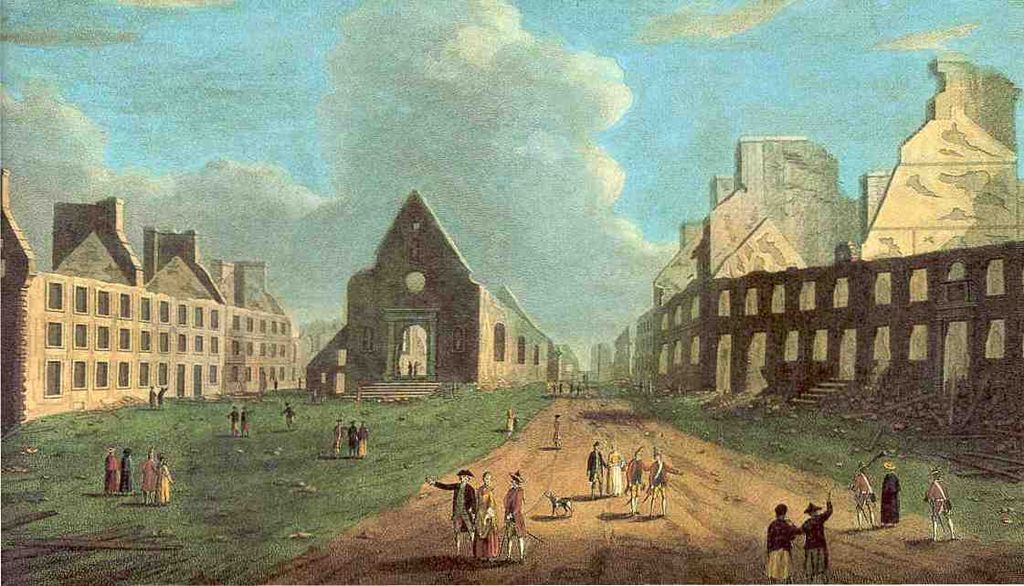
The City of Quebec was devastated by the War of the Conquest. Representation of Notre-Dame-des-Victoires Church, which was destroyed in 1759.
At the start of the War of the Conquest, the balance of power between New France and the Thirteen Colonies was very uneven. New France had a vast territory that was sparsely populated, making it hard to defend. France had also been weakened by previous conflicts and chose to focus its military efforts in Europe rather than in New France. The opposite was true for Great Britain, which invested heavily in its military forces in North America to take possession of New France and its resources.
| | New France
(Canada, Acadia, Louisiana) |
Thirteen Colonies
(New Hampshire, Massachusetts, Rhode Island, Connecticut, New Jersey, New York, Pennsylvania, Delaware, Maryland, Virginia, North Carolina, South Carolina, Georgia) |
| Territory |
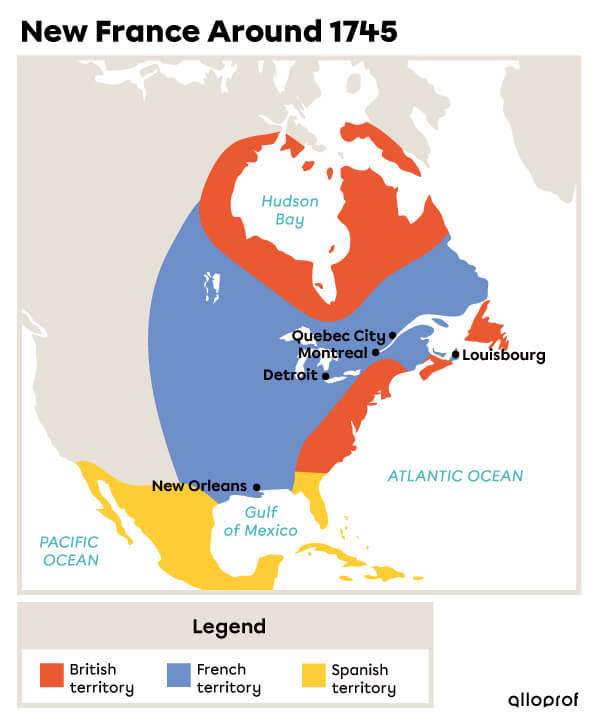 Data source: RÉCIT national, social universe domain, n.d. |
|
| Approximate Population | 82 000 | 1 600 000 |
| Political structure | A united political system: rapid decision-making | 13 political systems: slow decision-making |
| Military forces | Around 21 000 men:
38 warships |
Around 90 000 men:
116 warships |
The War of the Conquest began with fighting in the Ohio Valley. Both France and Great Britain laid claim to this territory, which was very important for the fur trade. In 1754, the British tried to seize control of the Ohio Valley and were met by opposition from the French. Despite being outnumbered, the French won several of these early battles. Their success was particularly thanks to their Indigenous allies and their military strategies.
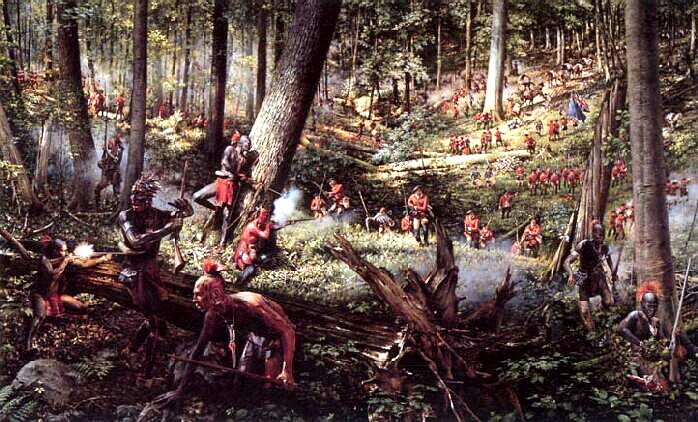
A battle from the War of the Conquest involving Indigenous peoples
Enlisting the most fit Canadian men and adolescents into the militia played a major role in the French victories. There were twice as many militiamen as regular soldiers on the French side during the War of the Conquest.
The Indigenous peoples used guerrilla warfare, which consisted of short surprise attacks. These attacks do not need much manpower as they are carried out by small groups.
After the Treaty of Utrecht in 1713, Great Britain held part of Acadia, now Nova Scotia. However, the British immigrants in Nova Scotia were greatly outnumbered by the Acadians, the original French settlers, who occupied the territory before they arrived.
Fearing that the Acadians would side with the French, in 1755, the British authorities decided to deport them to other British colonies and to Great Britain. This also meant that the rich farmland held by the Acadians could then be offered to British immigrants. Although many of them managed to flee to New France, some 10 000 of the 13 000 Acadians were deported.
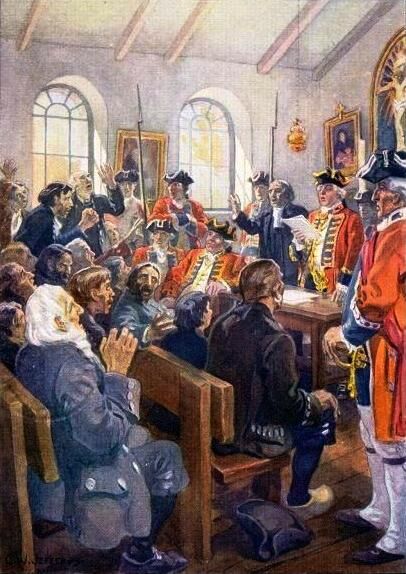
Reading of the deportation order
In 1758, luck turned for the French, who until then had won many victories. The British received better support from the mother country than the French and deployed their attacks on three fronts (the Ohio Valley and the Great Lakes, the Lake Champlain Valley, the Gulf of Saint-Lawrence) and started winning battles.
One of the most important victories was the capture of the Fortress of Louisbourg, in Acadia. The capture of Louisbourg, a strategic position, gave the British control over access to the St. Lawrence River. This meant that they could stop supplies from France from reaching Quebec City and Montreal.
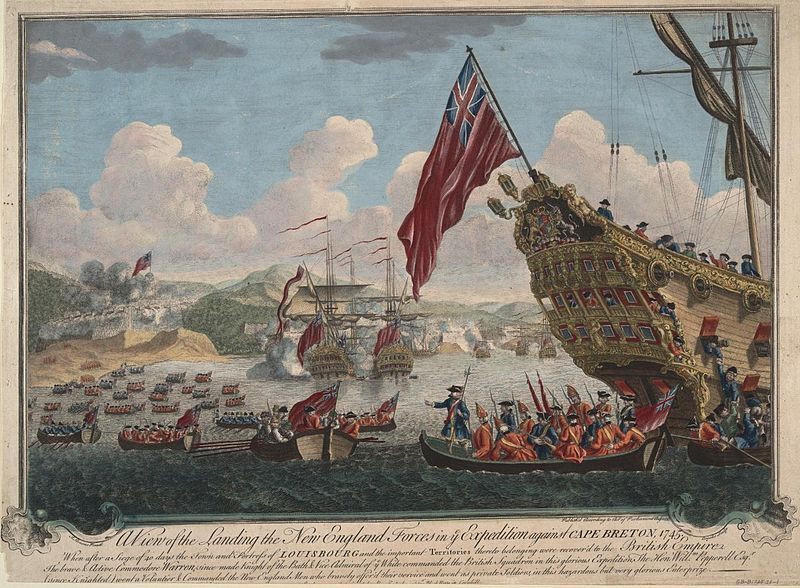
Representation of the English army landing for the attack on Louisbourg
In 1759, the British worked their way up the St. Lawrence River with the aim of conquering Quebec City and Montreal, the two political and economic centres of New France. In the spring, British troops bombarded the City of Quebec for more than two months under the command of British General James Wolfe. Wolfe also attempted an attack near the French defensive line, not far from Montmorency Falls, but it was unsuccessful.
On the night of September 12, 1759, Wolfe and his troops landed at Anse au Foulon to climb the cliffs to the Plains of Abraham. In the morning, the French Lieutenant General Louis-Joseph de Montcalm decided to fight the troops without waiting for reinforcements.
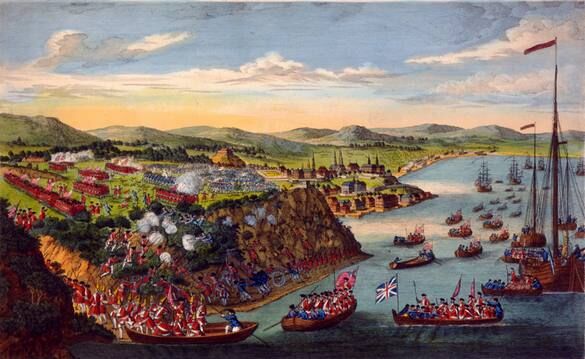
The Capture of Quebec; September 13, 1759
The battle was over quickly, and the British were victorious. The City of Quebec surrendered four days later.
In spring 1760, the French attempted to take Quebec City back from the British. Militiamen made up half of the French troops led by Chevalier de Lévis. They marched to Quebec City to fight the British at Sainte-Foy and emerged victorious, but could not win back Quebec City, where the British had taken refuge. Both sides needed supplies from their mother country to put an end to the fighting. Supplies finally arrived from Great Britain on May 9, 1760, forcing the French troops to fall back.
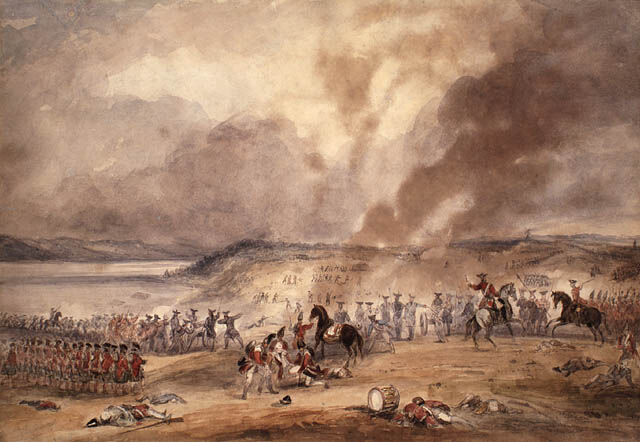
The Battle of Sainte-Foy
Montreal capitulated in September 1760 without a fight to avoid more victims. This event marked the end of the War of the Conquest.